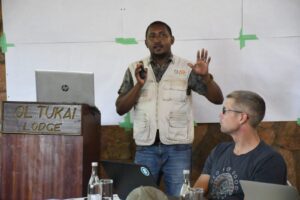Mara Elephant Project is kicking off 10 days to celebrate 10 years of MEP! Over the next 10 days you’ll hear stories about how MEP has evolved over the last decade, all ending with our Kumi (10th) Anniversary on September 12. Join us, as we take a stroll down memory lane and reminisce on some firsts for MEP. #MEPKumiAnniversary
The First ….
Elephant Collared

Collared elephant Ivy.
The first elephant ever collared was done in collaboration with Kenya Wildlife Service and Save the Elephants and it was our well-known female elephant, Ivy, who is still collared today. At the time of her collaring on December 6, 2011, she had several wounds as a result of conflict. The KWS vet at the time, Dominick Mijile, was able to treat her while she was down for her collaring. Ivy has since been categorized as a “cropaholic” elephant by the MEP Research Department after having almost a decade of movement data on her. Ivy’s frequent crop raiding behavior has taught MEP rangers a lot about high conflict seasons and best mitigation tactics.
Video footage from Ivy’s first collaring in 2011.
Ivy’s re-collaring operation in June 2016.
MEP Rangers
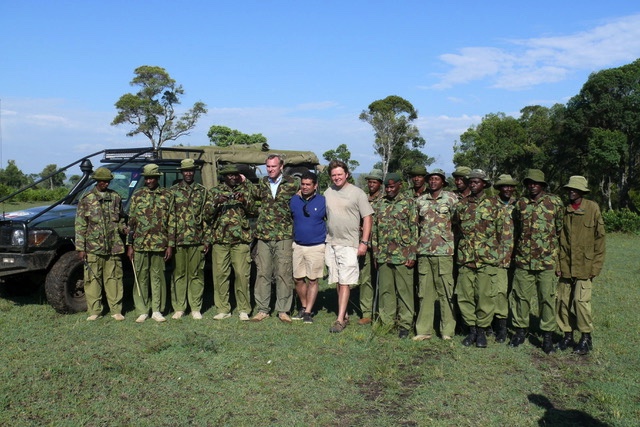
An early photo of MEP’s original eight rangers alongside rangers from Mara North Conservancy, CEO Marc Goss and Co-Founder Richard Roberts.
The first eight Mara Elephant Project rangers were tasked with patrolling outside of the conservancies, in unprotected areas of the Mara that were, at the time, seeing high levels of poaching. MEP still employs three of those original eight rangers, Senior Warden Zakayo Lenaeku, Njapit Dickson and Ibrahim Funani, and has now grown to over 60 rangers patrolling an area of 9,000 square km (over 2.2 million acres).

Before the tracking app, MEP’s original rangers would track collared elephants using VHF antennas and would find them nearby as the beep got more frequent.
Helicopter Response
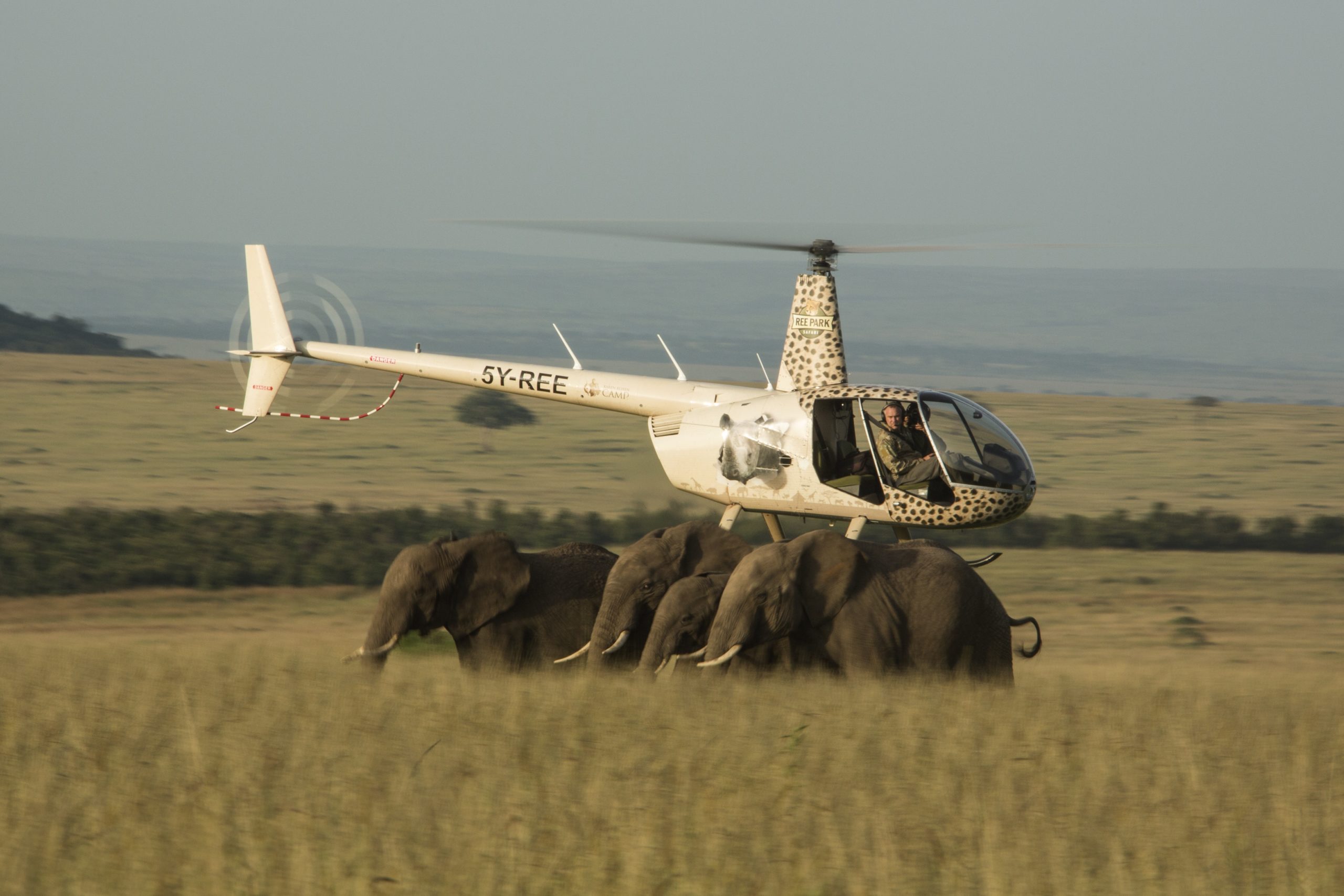
The first MEP helicopter used to push elephants back into the conservancy.
In 2015, Mara Elephant Project started flying the only helicopter dedicated to wildlife thanks to support from Karen Blixen Camp Trust. The helicopter has been a vital asset to our organization and was used for the very first time to mitigate conflict in an area not far from MEP’s campus. Elephants in Mara North Conservancy cross the Mara River to raid bordering farms and MEP’s original response on the ground to protect the community’s crops and ease rising tensions between elephants and people was effective; however, limited once the elephant crossed the river. The helicopter however offered a new alternative with its ability to fly over the river and quickly and safely move the elephants out of the farms and back into the conservancy. Since then, MEP has relied on this useful tool to respond to conflict all across the Greater Mara Ecosystem.
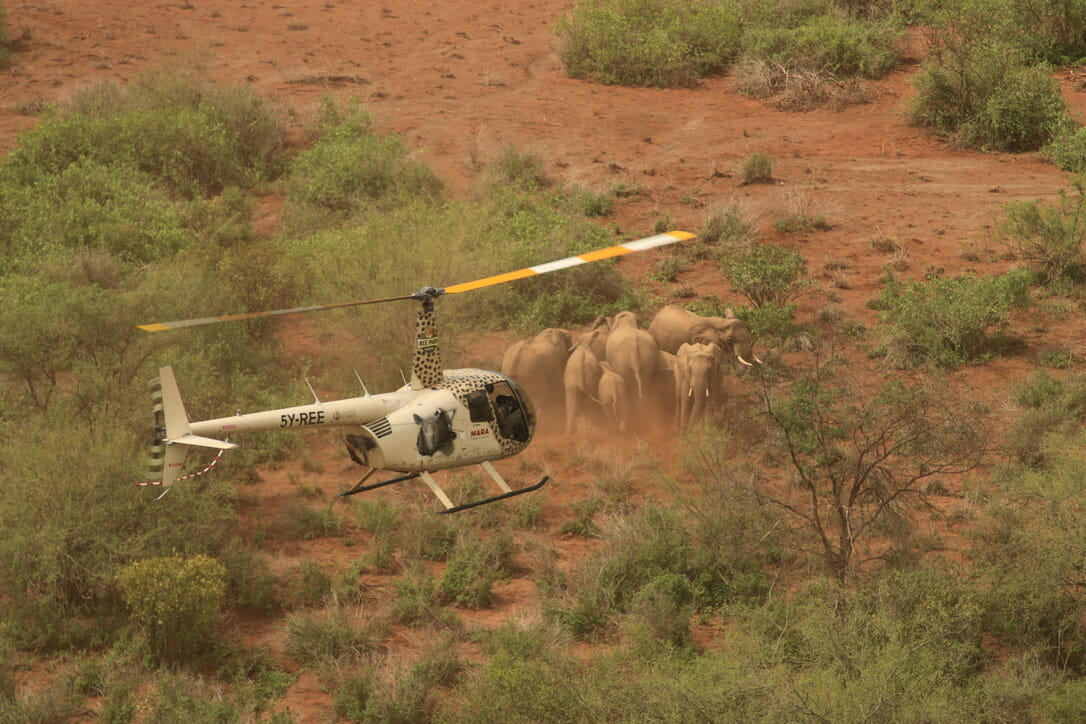
The first MEP helicopter responding to conflict.
Video from late 2016 showing Marc using the helicopter to push collared elephant Kegol out of farms.
Drone deployed
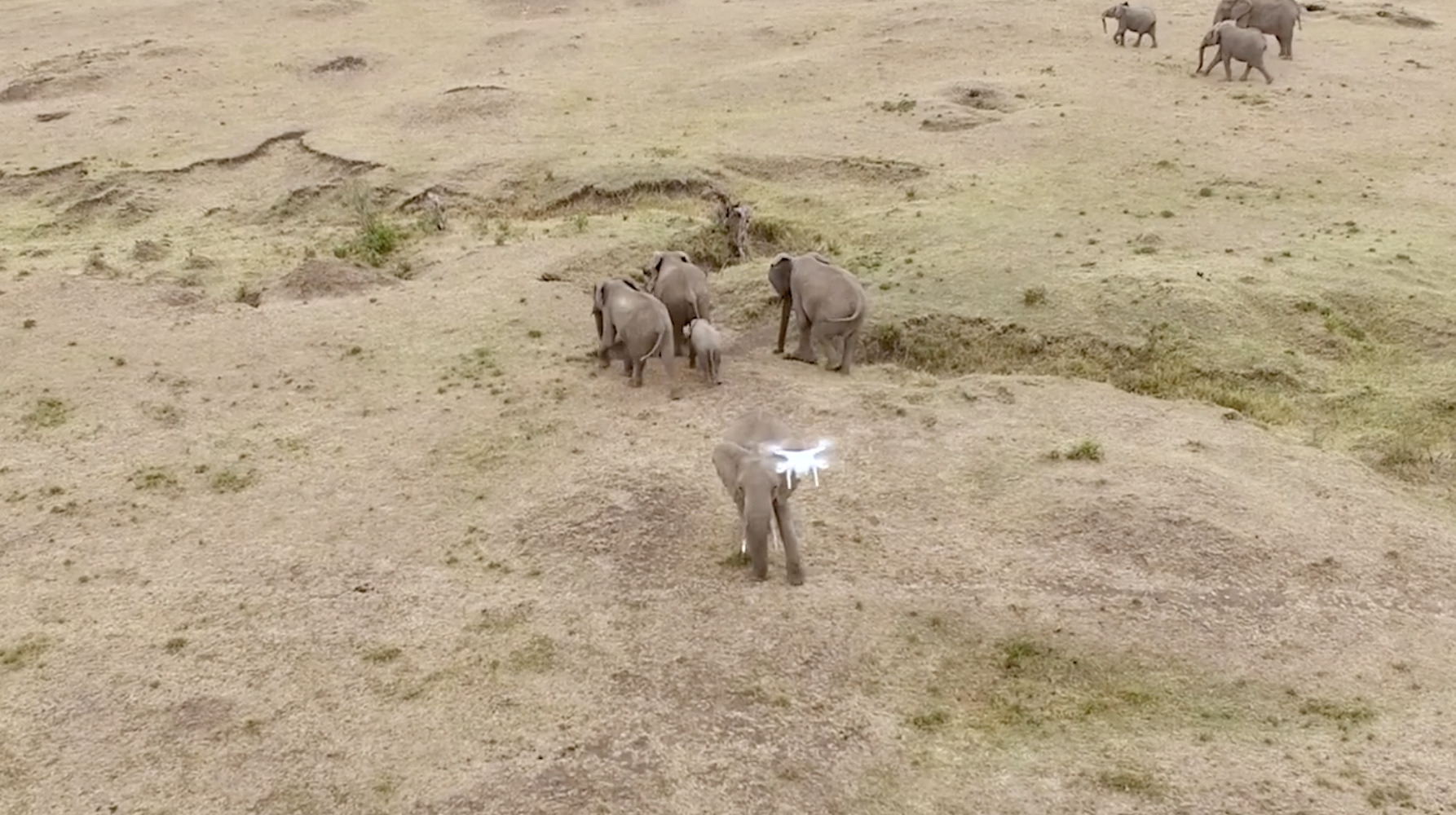
A drone pushing an elephant herd back into conservancy land.
This is a well-known MEP story; the first drone was purchased by CEO Marc Goss in 2012 for his personal use. While a hobby at the time, he was also curious to see how elephants reacted to it. To find out, he flew the drone near a herd of elephants and what he discovered was that they did not like the drone’s noise and ran away quickly when it approached. Soon, MEP was deploying this tool for conflict mitigation. Fast forward to 2021, and MEP is back to using drones again in conflict mitigation. Marc is using them during the day to move elephants out of farms, a much cheaper option than calling in the helicopter.
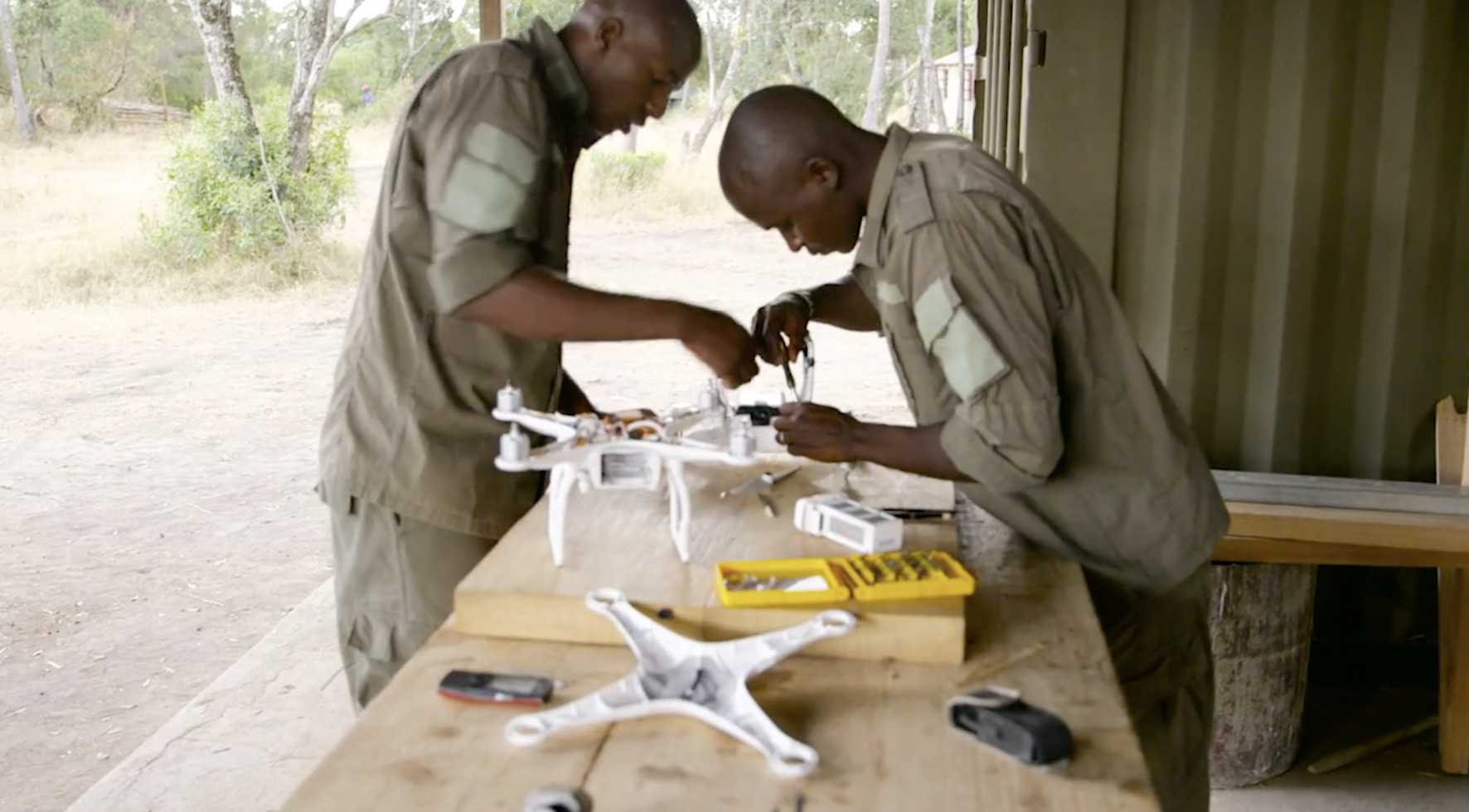
MEP rangers repairing a drone back in 2013.
Footage from a drone showing how effectively it moved a large elephant herd out of farms.
Snare Removed

Poison arrows and snares collected from the Mau Forest.
Removing bushmeat snares in the Greater Mara Ecosystem was not something that MEP has ever done until we started deploying teams inside the key forested areas of the ecosystem. The Maasai people are a herding community, so, they do not tolerate snares around their communities because they threaten their cattle. So, when MEP started, we often never encountered snares in our area of operation. However, once we expanded into the Mau Forest and then the Loita Forest, removing snares became a large focus for our teams. The forest provides the best cover for snares with plenty of thick brush to use to catch wildlife. When MEP started to operate in the forests in 2018, we also encountered drop spears used to poach elephants for the first time. Thanks to support from the Sheldrick Wildlife Trust and Lori Price, we now have two teams operating in each forest, Mau and Loita and a third in the Nyakweri Forest resulting in increased protection in three key forest areas of the Mara.
Video showing the removal of a drop spear in the Mau Forest.
Celebrate all of MEP’s first as we spend the next 10 days highlighting the last 10 years of MEP and as we look forward to the next 10 with your support!
